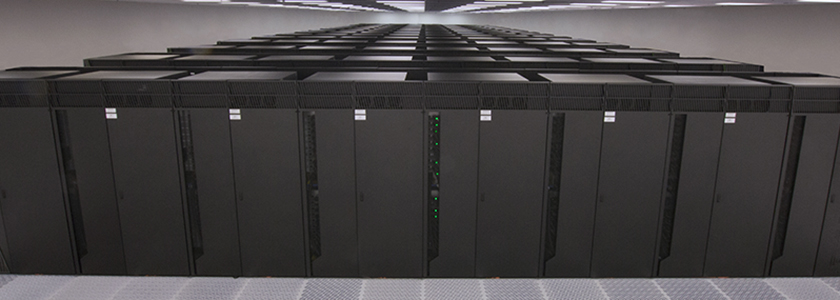Ranked among the world’s most powerful supercomputers, Sequoia supports two missions: quantify the uncertainties in numerical simulations of nuclear weapons performance and perform the advanced weapons science calculations needed to develop the accurate physics-based models for weapons codes. Sequoia is primarily water-cooled and significantly more energy efficient than comparable systems, which is essential to control operating costs.
Sequoia has been ranked at No. 1 and No. 2 on the Graph500 list since November 2012, indicating that it is one of the most efficient systems in the world for processing extremely vast (petabyte and exabyte-size) data sets. The Graph500 benchmark measures how quickly a system can search through a large data set—an important indicator of a system’s usefulness as computer scientists increasingly use supercomputers to analyze massive data-intensive workloads in addition to executing traditional modeling and simulation tasks. In June 2014, Sequoia traversed 16,599 billion edges per second
| Zone |
SCF
|
| Vendor |
IBM
|
| User-Available Nodes |
Login Nodes*
6
Batch Nodes
94,208
Debug Nodes
4,096
Total Nodes
98,304
|
| CPUs |
CPU Architecture
IBM PowerPC A2
Cores/Node
16
Total Cores
1,572,864
|
| Memory Total (GiB) |
1,572,864
|
| CPU Memory/Node (GiB) |
16
|
| Clock Speed (GHz) |
1.6
|
| Peak single CPU memory bandwidth ((GiB)/s) |
43
|
| OS |
RHEL/CNK
|
| Interconnect |
5D Torus
|
| Recommended location for parallel file space |
/p/lustre1
|
| Program |
ASC
|
| Year Commissioned |
2012
|
| Compilers | |
| Documentation |


